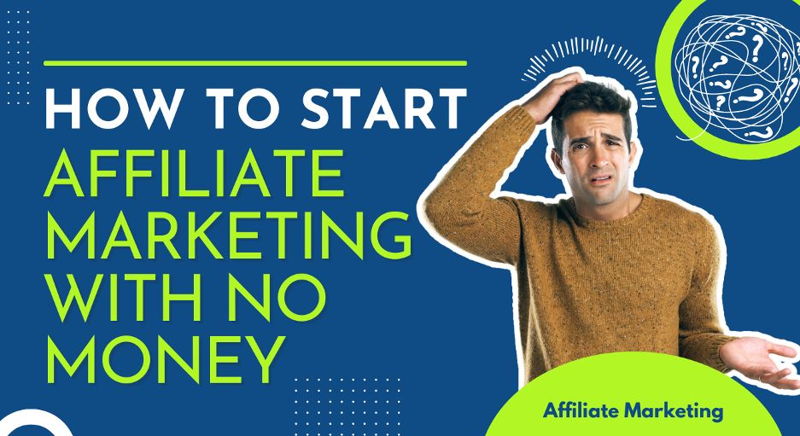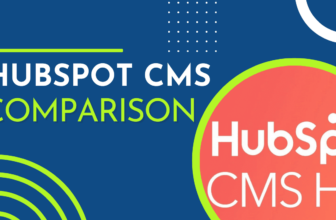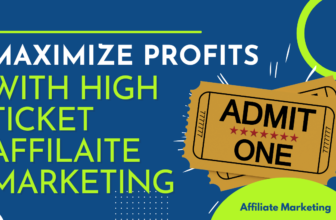
Understanding Affiliate Marketing: The Basics for Beginners
Affiliate marketing is a performance-based marketing strategy where affiliates promote a merchant’s products or services and earn a commission for every sale or lead generated through their efforts. By sharing their unique affiliate link within blog posts, social media, and other content, affiliates can effectively promote products or services and earn commissions. The four main components of affiliate marketing are affiliates, merchants, networks, and customers.
Affiliate marketing benefits both merchants and affiliates. Merchants can increase their sales and reach a wider audience without incurring upfront marketing costs. Affiliates can earn money by promoting products they love and believe in, without having to create their own products. There are different types of affiliate marketing models, including pay-per-sale, pay-per-lead, and pay-per-click.
Why is Affiliate Marketing a Good Business Model?
Affiliate marketing is an attractive business model because of its low startup costs and flexibility. You don’t need a lot of money to start an affiliate marketing business, and you can work from anywhere with an internet connection. Affiliate marketers can start with minimal or no upfront costs by leveraging social media platforms and creating content to drive traffic. Affiliate marketing can also provide passive income, as you can earn commissions on autopilot once you have set up your promotional strategies.
Moreover, affiliate marketing has the potential for high earnings and scalability. The more traffic and sales you generate, the more money you can earn. You can also promote multiple products and services to diversify your income streams.
How to Start Affiliate Marketing With No Money
To start affiliate marketing, there are several essential steps you should follow to ensure your success. By meticulously executing each step, you can establish a profitable and sustainable online business.
Step 1: Research and Select a Profitable Niche
The first step in your affiliate marketing endeavor is to identify a niche that is both profitable and aligns with your interests or expertise. A niche is a specific market or segment with unique needs, preferences, or interests. Conduct thorough research to determine the profitability of potential niches by analyzing market demand, competition, and the commission rates offered by affiliate programs. Consider factors such as the level of competition in the niche, the size and growth potential of the target audience, the availability of quality products to promote and the potential for recurring commissions. Selecting a niche that is both profitable and manageable will set the foundation for your affiliate marketing success.
Step 2: Choose the Right Affiliate Program(s) to Join
Once you have identified a profitable niche, it’s time to find the right affiliate programs to join. Numerous affiliate programs are available across various industries, each with unique commission structures, cookie durations, and product offerings. We’ll talk more about finding the best affiliate programs further down.
Step 3: Create a Website or Blog to Promote Affiliate Products
A professional and user-friendly website or blog is crucial for promoting affiliate products effectively. Your website serves as a hub for your content strategy, email marketing, and social media efforts. It’s essential to invest time and resources into creating a visually appealing and easy-to-navigate website that accurately represents your brand and niche. A well-designed website will establish credibility, build trust, and encourage potential customers to engage with your content and affiliate offers.
Step 4: Develop a Content Strategy to Attract and Engage Potential Customers
Affiliate marketing efforts are the backbone of any successful affiliate marketing strategy. High-quality, engaging, and informative content will attract potential customers, build trust, and position you as an authority in your niche. Consider the following content formats: Blog posts, product reviews, tutorials and how-to guides, infographics, videos and podcasts. Develop a content calendar to ensure consistency and maintain a steady flow of fresh content. Regularly update and optimize your content to improve search engine rankings and maintain audience engagement.
Step 5: Utilize Email Marketing and Social Media to Build Relationships and Drive Sales
Affiliate marketing work involves using email marketing and social media as powerful tools for building relationships, nurturing leads, and driving sales. By leveraging these channels, you can reach a wider audience, increase brand awareness, and promote your affiliate offers. By effectively utilizing email marketing and social media, you can foster relationships, increase conversions, and maximize your affiliate marketing revenue.
Finding the Right Affiliate Programs to Join for Free
When delving into the world of affiliate marketing, one of the first and most crucial steps you’ll take is finding the right affiliate network to join. Affiliate networks are especially important for beginners as they provide access to numerous affiliate programs, enabling marketers to find and choose products that align closely with their niche, facilitating their entry into the affiliate marketing space. The key to success here is to research and compare various programs and networks thoroughly. By doing so, you’ll be able to identify those that offer high commissions, quality products, and an impeccable reputation in the industry.
To begin your search, consider looking for affiliate programs that provide competitive commissions. High commissions will ensure that your efforts are rewarded adequately, allowing you to earn a substantial income from your promotional activities. Additionally, it’s essential to assess the quality of the products or services being offered by the affiliate program. By promoting high-quality offerings, you’ll be more likely to attract and retain customers, ultimately leading to increased conversions and greater earnings.
Another critical factor to consider when selecting affiliate programs is the reputation of the company or network. A good reputation often indicates that the program is reliable, trustworthy, and responsive to its affiliates’ needs. To gauge a program’s reputation, you can read online reviews, check industry forums, and seek recommendations from experienced affiliates. This information will help you avoid potential scams and partner with reputable companies, thereby protecting your online presence and credibility.
Before joining any affiliate program, it’s also essential to examine any associated fees or minimum payout thresholds. Some programs may charge a sign-up fee, while others might require you to reach a specific payout threshold before releasing your earnings. By being aware of these costs and requirements upfront, you can make informed decisions about which programs align best with your financial goals and budget.
Lastly, diversifying your income streams is an excellent strategy for building a sustainable affiliate marketing business. By signing up for multiple affiliate programs, you can spread your risk and tap into various niches and audiences. This approach will not only help you maximize your earning potential but also protect your business from fluctuations in any single program’s performance.
Finding the right affiliate programs to join for free involves careful research, comparison, and consideration of various factors. By focusing on high commissions, quality products, and a good reputation, and by being mindful of fees and minimum payout thresholds, you can make informed decisions that will set you on the path to success in affiliate marketing. Moreover, by diversifying your income streams, you’ll be well-positioned to build a resilient and profitable business in this exciting and dynamic industry.
To create a website or blog to do affiliate marketing on a low or no budget, you can choose a domain name and web hosting service, use a content management system (CMS) like WordPress to build your site, and utilize free or low-cost themes and plugins to customize your site. You should also optimize your site for mobile devices and search engines.
Generating High-Quality Content to Attract Visitors
To create truly exceptional content that will captivate your audience and keep them coming back for more, you must focus on delivering value, providing informative insights, and creating engagement. This is the key to attracting and retaining visitors on your website. The more visitors to your site, the more affiliate sales you can potentially earn.
First and foremost, your content should always be valuable to your target audience. Consider what questions they might have, what problems they might be facing, and what information they might be seeking. By addressing these needs, you can create content that resonates with your audience and encourages them to explore your site further. In addition to being valuable, your content should also be informative. This means going beyond the surface level and providing in-depth insights that help your audience learn something new or gain a deeper understanding of a particular topic. By doing so, you can establish yourself as a thought leader in your industry and build trust with your audience.
Creating engagement is also crucial for high-quality content. Using a variety of content formats, such as blog posts, videos, and infographics, will keep things interesting and dynamic. You should also consider using interactive elements, such as quizzes or polls, to encourage your audience to engage with your content in a more active way.
Once you’ve created your high-quality content, it’s important to optimize it for search engines. This involves using keywords and meta tags that are relevant to your content and audience. By doing so, you can improve your search engine rankings and make it easier for your target audience to find your content.
Finally, don’t forget to promote your content on social media and other channels. This can help you reach a wider audience and increase your visibility online. By sharing your content on social media, you can also encourage your followers to share it with their own networks, further expanding your reach. In short, creating high-quality content that attracts visitors requires a thoughtful and strategic approach. By focusing on value, information, engagement, optimization, and promotion, you can create content that not only attracts visitors but also encourages them to become loyal followers and customers.
Building an Email List: The Power of Organic Growth
Building an email list is a simple and effective way to grow your affiliate marketing business. Here’s a breakdown of how you can do it:
Create a Lead Magnet or Opt-in Form
A lead magnet is a valuable resource that you offer to potential subscribers in exchange for their email address. This could be an e-book, a checklist, a webinar, or any other resource that your audience would find helpful. Alternatively, you can create an opt-in form that encourages visitors to your website to sign up for your email list. This can be as simple as a form that asks for their name and email address.
Use Email Marketing Software
Once you have started collecting email addresses, you will need to use email marketing software to manage your list and send automated emails. There are many email marketing tools available, such as Mailchimp, AWeber, and ConvertKit. These tools allow you to segment your list, create automated email sequences, and track the performance of your emails.
Provide Value and Build Relationships
The key to a successful email list is to provide value and build relationships with your subscribers. This means sending regular emails that are informative, entertaining, and helpful. You can share tips and advice, industry news, and updates about your affiliate products and services. By providing value and building relationships with your subscribers, you will establish trust and credibility. This will make it more likely that they will be interested in your affiliate products and services when you promote them.
Promote Your Affiliate Products and Services
Once you have built a relationship with your subscribers, you can start promoting your affiliate products and services. You can do this by including affiliate links in your emails, or by sending dedicated emails that promote a specific product or service. It’s important to only promote products and services that you believe in and that will be useful to your subscribers. If you promote low-quality products or services, you risk damaging your reputation and losing the trust of your subscribers.
Social media is a free marketing channel that you can use to promote your affiliate products and services. Choose the right platforms for your niche and audience, create and share valuable content, engage with your audience, and use social media advertising to reach a larger audience. Additionally, maintaining active social media accounts is crucial for driving traffic to your affiliate links and enhancing visibility on search engines and social networks.
Search Engine Optimization: Driving Organic Traffic
Search engine optimization (SEO) is a way to improve your website and its content to rank higher in search engine results pages (SERPs). Utilizing social media platforms is also crucial for driving traffic for affiliate marketing. This practice helps drive organic, or non-paid, traffic to your site. These tips can help you to optimize your affiliate marketing site for search engines:
Research and use relevant keywords
Identify the words and phrases potential customers use when searching for products or services like yours. Incorporate these keywords naturally into your content, including meta tags, headings, and body text.
Optimize your site’s structure and design
Ensure your site is easy for search engines to crawl and understand. Use a clean, logical site structure, clear navigation, and descriptive URLs. Also, make sure your site loads quickly and is mobile-friendly.
Build high-quality backlinks
Backlinks from reputable sites to your content signal to search engines that your site is valuable and trustworthy. Focus on earning these links through partnerships, guest posting, and creating shareable, high-quality content.
Monitor your site’s search engine rankings
Regularly track your site’s performance in search results for your target keywords. Adjust your strategy as needed based on your findings, such as updating content, refining your keyword strategy, or improving site usability.
To improve your affiliate marketing performance, there are several free tools you can use. One such tool is Google Analytics. This can help you track your site’s traffic and engagement, giving you valuable insights into how users are interacting with your content. Another important step is to monitor your affiliate program’s performance. By regularly checking in on your program’s metrics, you can identify what’s working well and what might need to be adjusted. This will allow you to fine-tune your strategy and maximize your earnings.
In addition to tracking your site’s traffic and your affiliate program’s performance, it’s also important to focus on conversion optimization. This involves testing and optimizing your content and calls-to-action to make it as easy as possible for users to take the desired action. By improving your conversion rate, you can increase your earnings without necessarily needing to attract more traffic. It’s also essential to stay up-to-date with industry trends and best practices. The affiliate marketing landscape is constantly evolving, and it’s important to stay on top of the latest developments to ensure that your efforts are effective. By staying informed and continuously refining your approach, you can maximize your affiliate marketing performance.
Monetizing Your Blog: Making Money with Affiliate Marketing
Monetizing your blog through affiliate marketing can be a great way to earn money while providing value to your audience. Here are some straightforward steps to help you earn an income from your blog:
Choose high-quality and relevant products to promote:
Look for products that align with your blog’s niche and audience. Promoting products that are relevant to your audience will increase the chances of them making a purchase, and choosing high-quality products will help maintain your audience’s trust.
Use affiliate links and banners strategically in your content
Place your affiliate links and banners in strategic locations within your content. This could be within a product review, a tutorial, or a resource page. Make sure that your links and banners are relevant to the content and are placed in a way that doesn’t disrupt the user experience.
Provide value and build trust with your audience before promoting products
Before promoting any products, make sure that you have built a relationship with your audience. Provide valuable content that addresses their needs and interests. Once you have built trust with your audience, they will be more likely to consider your product recommendations.
Disclose your affiliate relationships to your audience and comply with legal requirements:
It’s important to be transparent with your audience about your affiliate relationships. Disclose your affiliate relationships in a clear and prominent way, and make sure that you comply with legal requirements such as the Federal Trade Commission (FTC) guidelines. By following these steps, you can monetize your blog with affiliate marketing in a way that provides value to your audience and maintains their trust.
Staying Persistent and Learning from Mistakes
Embarking on a successful affiliate marketing business is an exciting journey that requires a combination of time, effort, and persistence. It’s essential to set realistic goals and expectations right from the start. Understand that success will not come overnight; it is a gradual process that involves consistent work, learning, and adaptation.
One of the most crucial aspects of starting an affiliate marketing business is learning from your failures. Do not be discouraged by setbacks or slow progress. Instead, view them as opportunities to grow and improve. Analyze what went wrong, adjust your strategy, and keep moving forward.
Staying up-to-date with industry trends and best practices is also vital for your success. Affiliate marketing is a dynamic field that is constantly evolving. Keeping yourself informed about the latest trends and techniques will help you stay competitive and adapt to changes more efficiently.
Additionally, seeking out mentors and resources can significantly accelerate your growth and improvement. Look for experienced affiliates who can provide guidance, advice, and support. Join affiliate marketing communities, attend industry events, and engage in online forums to connect with like-minded individuals and expand your knowledge. In summary, starting an affiliate marketing business is a rewarding yet challenging endeavor. By setting realistic goals, learning from your failures, staying informed about industry trends, and seeking out mentors and resources, you can increase your chances of success and build a profitable and sustainable affiliate marketing business.
Expanding Your Reach: Exploring New Opportunities
Affiliate marketing can be a great way to earn money online, but it’s important to diversify your income streams to expand your reach and explore new opportunities. Here are some tips to help you do just that:
- Join multiple affiliate programs: Don’t limit yourself to just one affiliate program. By joining multiple programs, you can promote a wider range of products and services, which can help you reach a larger audience.
- Explore new and emerging marketing channels: While social media and email marketing are popular channels for affiliate marketing, don’t be afraid to try new and emerging channels. For example, you could try promoting products on TikTok or through a messaging app like WhatsApp.
- Collaborate with other affiliates and influencers: Working with other affiliates and influencers in your niche can help you reach a larger audience. You could consider co-creating content, such as a blog post or video, or promoting each other’s products.
- Continuously learn and adapt: The affiliate marketing industry is constantly changing, so it’s important to stay up-to-date with the latest trends and best practices. This could involve reading industry blogs, attending webinars, or taking online courses.
By following these tips, you can diversify your income streams and set yourself up for success in affiliate marketing.
FAQs
Do you need money to start affiliate marketing?
No, you don’t need money to start affiliate marketing. You can create a website or blog for free, sign up for affiliate programs for free, and promote products and services for free using social media and other channels.
How can I start affiliate marketing for free?
To start affiliate marketing for free, you can follow these steps: research and select a profitable niche, choose the right affiliate program(s) to join, create a website or blog to promote affiliate products, develop a content strategy to attract and engage potential customers, and utilize email marketing and social media to build relationships and drive sales.
How do I become an affiliate marketer for free?
To become an affiliate marketer for free, you can follow these steps: research and select a profitable niche, choose the right affiliate program(s) to join, create a website or blog to promote affiliate products, develop a content strategy to attract and engage potential customers, and utilize email marketing and social media to build relationships and drive sales.
Wrapping up our guide on how to start affiliate marketing with no money
Affiliate marketing is a great business model for those who want to earn money online without incurring high startup costs. By following the steps outlined in this guide, you can start your affiliate marketing journey with little money and build a successful and profitable business over time. It has to be said though, that the fastest way to learn affiliate marketing is by joining an affiliate marketing training program – this will require monetary investment.
Remember to choose a profitable niche, select the right affiliate programs, create high-quality content, build an email list, leverage social media, optimize your site for search engines, and continuously analyze and improve your performance. With persistence, learning, and adaptation, you can achieve your affiliate marketing goals and enjoy the freedom and flexibility of this exciting business model.
For more information and resources on affiliate marketing, check out these affiliate marketing conferences and events, our post on affiliate marketing advice and affiliate marketing blogs and podcasts.
64






